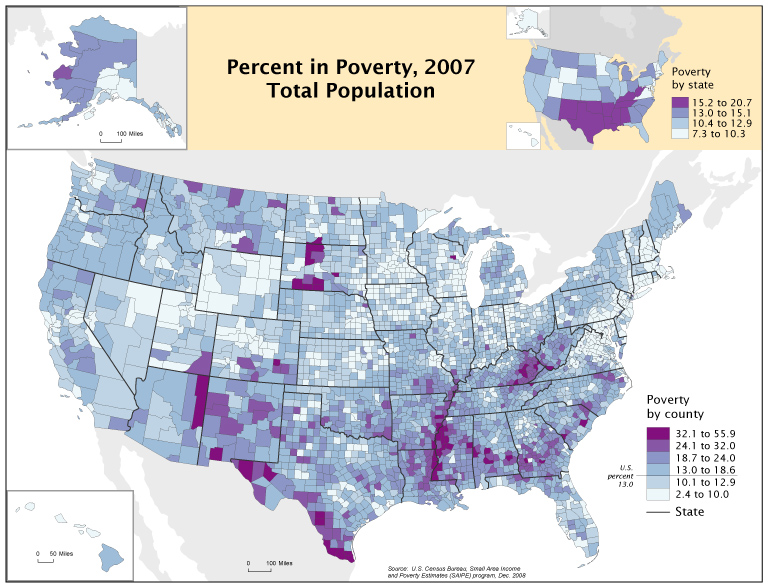U.S. plans new measure for poverty
From the NY Times:
The federal government announced on Tuesday that it would begin producing an experimental measurement of poverty next year, a step toward the first overhaul of the formula since it was developed nearly a half-century ago by an obscure civil servant in the Social Security Administration.
While the original definition — the cash income collected by a family or individual — will remain the official statistical measure for eligibility and distribution of federal assistance for the time being, “the new supplemental poverty measure will provide an alternative lens to understand poverty and measure the effects of antipoverty policies,” said Rebecca Blank, the under secretary of commerce for economic affairs.
Advocates for the poor and technical experts have argued for years that the original standard, developed in conjunction with the Johnson administration’s War on Poverty, was anachronistic. The civil servant who created it, Mollie Orshansky, based it on the Agriculture Department’s cheapest meal plan, on the assumption that the average family spent a third of its income on food at the time. Her formula has largely remained the same except for inflation adjustments.
The
Poverty Reduction Initiative has advocated for a change to the Federal Poverty Measure for many years. The problems with the current standard are numerous. In some instances, it undervalues poverty by failing to account for costs such as shelter, transportation, medical expenses and clothing. In others, it overvalues poverty by failing to account for recipients of services, which can effectively boost incomes over the poverty level.

A new measure would allow the government, non-profit agencies and other human service initiatives a more accurate look into the needs of both specific families and diverse communities. Hopefully the "test run" this fall will prove just how valuable a new measure would be to supporting the needs of millions of Americans.
Read the full article:
http://www.nytimes.com/2010/03/03/us/03poverty.html?scp=3&sq=poverty&st=cse






